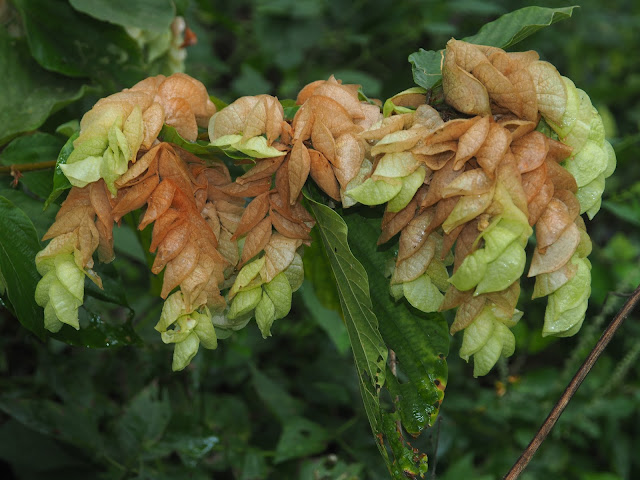Here are some of them as remnants of our rainy season growths. I warn you they are mostly taken because of butterflies!
Above and Below is Plumbago zeylanica, an endemic white plumbago species in the country. I found this in the wild and amazed that a butterfly is ovipositing on its young flower buds. I have lots of the red plumbago, but i haven't observed any butterflies nectaring on them or any larva eating them.
Zebra Blue or Plumbago Blue, Leptotes plinius leopardus, a lycaenid
the clump of Plumbago zeylanica
a hover fly and a wasp moth nectaring on the Mikania micrantha
Dwarf Crow and Grey Glassy Tiger on porter weed, Stachetarpheta jamaicensis


Glassy Tiger, Parantica vitrina vitrina and Snow Flat, Tagiades japetus titus
a large clump of porter weed, Stachetarpheta jamaicensis on a fallowed grassy area
a blue weed
this Tiny Grass Blue, Zizina hylax pygmaea, is the tiniest butterfly in my area that is less than a centimeter both in length and in width. It is so frantic and sometimes difficult to photograph as it alights again after minutes. But when it is still early they can be easily posing with the camera and later when they feed and oviposit on the very short grasses.
this is the NOID blue flowers with also very short stems
Aerva lanata (Amaranthaceae), only a few insects alight on them, yet i find them pretty too. We have lots of this in our property and on adjacent uncultivated lands. I just realized upon learning its name that it has lots of medicinal properties and antioxidant components. There are even dried plants being sold formally in the internet and on ebay.
Aerva lanata growing abundantly in our property
Another low weed that flowers profusely and loved by tigers and skippers. This Grey Glassy Tiger, Ideopsis juventa manillana, kept on coming back and forth from this lump of flowers.
This is the whole stand of the weed as it starts to produce flowers, just about 2 ft tall. The dry season has started and this seems to be just starting to reproduce. At least the butterflies have alternatives from the flowers that already finished maturity for the rainy season.
Wildflower Wednesday
Wildflower Wednesday













































